Positive News is the public version of our Annual Report of 2012.
Also available as PDF download



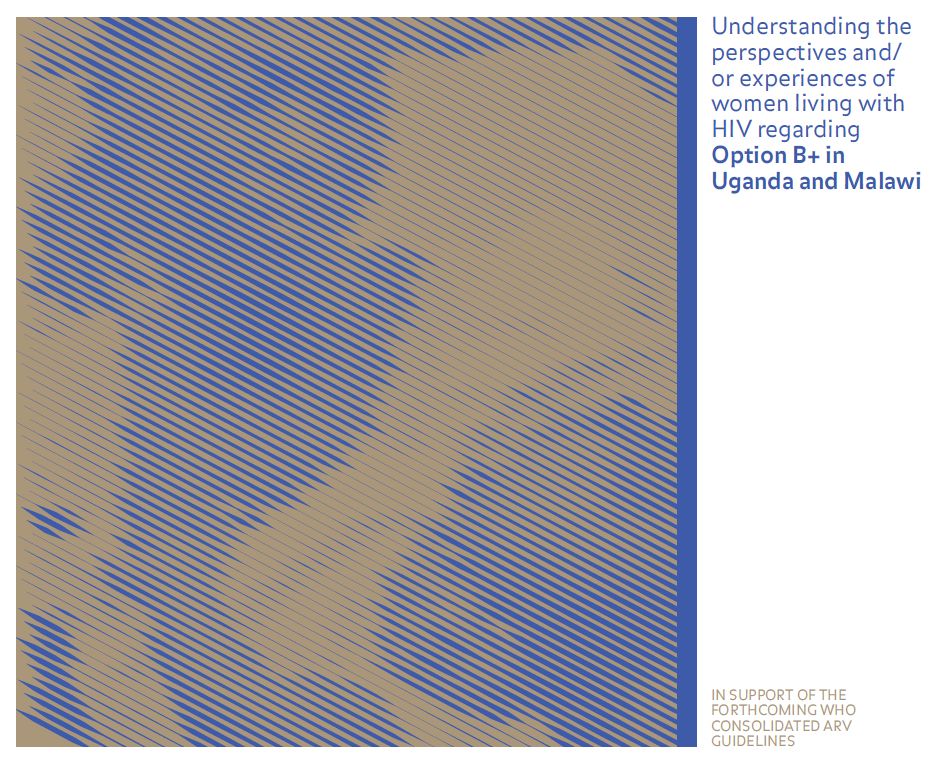
Option B+ is a prevention of vertical transmission approach for expectant mothers living with HIV in which women are immediately offered treatment for life regardless of their CD4 count. This approach offers advantages such as protection of partner(s) and (unborn) child, as well as benefits to the woman’s health, but also carries with it risks.
In the report GNP+ and ICW present the results of 8 different focus group discussions that discussed these issues in Uganda and Malawi. Below poster summarises the results.
For additional information on Uganda and Malawi, visit the stigma index website

In the 2013 Consolidated Guidelines on the Use of Antiretroviral Drugs for Treating and Preventing HIV Infection (2013 Guidelines), the World Health Organization (WHO) takes a
welcomed step in recommending that people living with HIV everywhere be offered a standard of antiretroviral treatment and care that is closer to what is available in resource-rich countries.
Together with STOP AIDS NOW and the HIV Alliance, we have summarised the guidelines and noted recommendations and key issues from a community and civil society perspective.

To inform the 2013 revision of the WHO Guidelines on HIV treatment GNP+ and the HIV Alliance conducted community consultations.
Expanding antiretroviral therapy (ART) access is a cornerstone of reducing mortality and improving health outcomes among people living with HIV (PLHIV) in all settings. Given recent advances in scientific evidence on the use of antiretroviral drugs (ARVs) for HIV treatment, including their impact on health outcomes and HIV prevention, the World Health Organization (WHO) has reviewed and consolidated all ARV-related guidelines into a single compendium for publication in 2013.
The 2013 WHO Consolidated ARV Guidelines on the Use of Antiretroviral Drugs for Treating and Preventing HIV Infection (2013 ARV Guidelines) focus on four areas:
(1) clinical guidelines for adults and adolescents;
(2) clinical guidelines for maternal and child health;
(3) operations and service delivery guidance (for the first time); and
(4) guidance for programme managers.
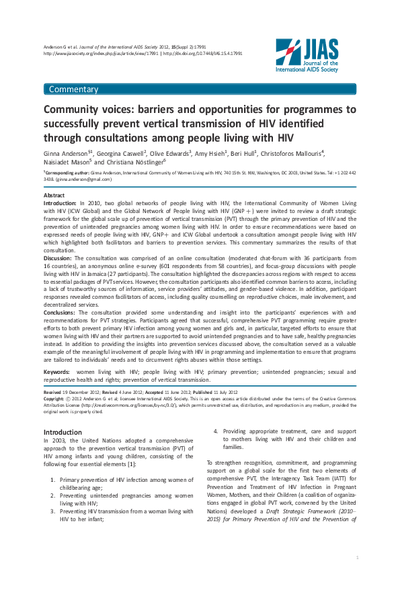
Introduction: In 2010, two global networks of people living with HIV, the International Community of Women Living with HIV (ICW Global) and the Global Network of People living with HIV (GNP+) were invited to review a draft strategic framework for the global scale up of prevention of vertical transmission (PVT) through the primary prevention of HIV and the prevention of unintended pregnancies among women living with HIV. In order to ensure recommendations were based on expressed needs of people living with HIV, GNP+ and ICW Global undertook a consultation amongst people living with HIV which highlighted both facilitators and barriers to prevention services. This commentary summarizes the results of that consultation.
Discussion: The consultation was comprised of an online consultation (moderated chat-forum with 36 participants from 16 countries), an anonymous online e-survey (601 respondents from 58 countries), and focus-group discussions with people living with HIV in Jamaica (27 participants). The consultation highlighted the discrepancies across regions with respect to access to essential packages of PVT services. However, the consultation participants also identified common barriers to access, including a lack of trustworthy sources of information, service providers’ attitudes, and gender-based violence. In addition, participant responses revealed common facilitators of access, including quality counselling on reproductive choices, male involvement, and decentralized services.
Conclusions: The consultation provided some understanding and insight into the participants’ experiences with and recommendations for PVT strategies. Participants agreed that successful, comprehensive PVT programming require greater efforts to both prevent primary HIV infection among young women and girls and, in particular, targeted efforts to ensure that women living with HIV and their partners are supported to avoid unintended pregnancies and to have safe, healthy pregnancies instead. In addition to providing the insights into prevention services discussed above, the consultation served as a valuable example of the meaningful involvement of people living with HIV in programming and implementation to ensure that programs are tailored to individuals’ needs and to circumvent rights abuses within those settings.
Keywords: women living with HIV; people living with HIV; primary prevention; unintended pregnancies; sexual and reproductive health and rights; prevention of vertical transmission
(Published: 11 July 2012)
Citation: Anderson G et al. Journal of the International AIDS Society 2012, 15(Suppl 2):17991
http://www.jiasociety.org/index.php/jias/article/view/17991 | http://dx.doi.org/10.7448/IAS.15.4.17991
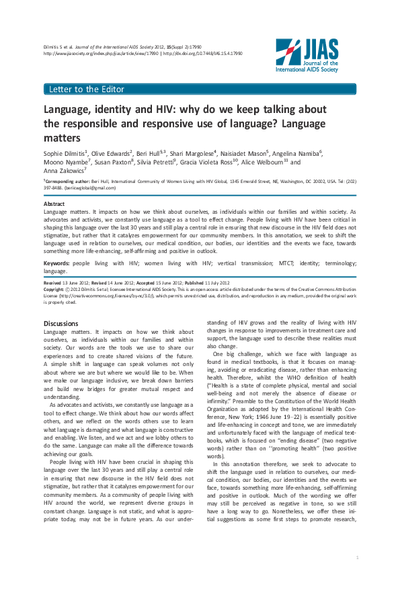
Why do we keep talking about the responsible and responsive use of language? Language matters
Language matters. It impacts on how we think about ourselves, as individuals within our families and within society. As advocates and activists, we constantly use language as a tool to effect change. People living with HIV have been critical in shaping this language over the last 30 years and still play a central role in ensuring that new discourse in the HIV field does not stigmatize, but rather that it catalyzes empowerment for our community members. In this annotation, we seek to shift the language used in relation to ourselves, our medical condition, our bodies, our identities and the events we face, towards something more life-enhancing, self-affirming and positive in outlook.
Keywords: people living with HIV; women living with HIV; vertical transmission; MTCT; identity; terminology; language
(Published: 11 July 2012)
Citation: Dilmitis S et al. Journal of the International AIDS Society 2012, 15 (Suppl 2):17990
http://www.jiasociety.org/index.php/jias/article/view/17990 | http://dx.doi.org/10.7448/IAS.15.4.17990

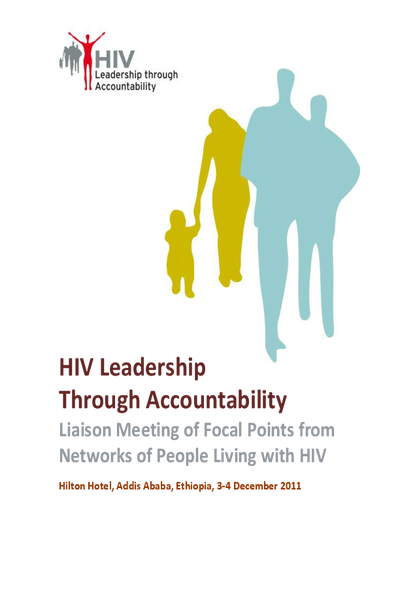
GNP+ at ICASA 2011 held a liaison meeting for focal points from networks of people liivng with HIV involved in the HIV Leadership through accountability programme. The meeting included 18 people of 10 different networks.
Main issues discussed were:

The 3rd HIV LTA Planning and Review Meeting marked a new stage in the evolution of the LTA programme, with the first round of countries that joined the programme sharing their expertise and taking on mentorship roles to the other countries. In addition, they shared key findings and strategized about how civil society and the national networks of PLHIV should work together to plan and implement evidence-based advocacy and campaigns.
Available in English and French
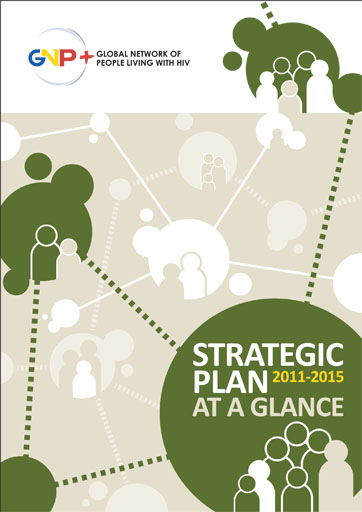
The Global Network of People Living with HIV (GNP+) has been at the forefront of the HIV response since 1986. GNP+ aims to continue to play an active role in guaranteeing the meaningful involvement and quality of life of people living with HIV (PLHIV) by transforming itself in order to meet the ever-growing needs and challenges of the HIV response. Informed by the vision to be a powerful, united worldwide social movement of PLHIV, with their leadership and voice at the core of the HIV pandemic, GNP+ recognises the need to evolve with the times to remain current and cutting-edge.
This comprehensive Strategic Review explored key questions in three areas, focusing on the role, work, and governance of GNP+. While the new Strategic Plan 2011–2105 builds on the achievements of the past, it is also grounded in the realities facing PLHIV today and incorporates recommendations from GNP+’s Strategic Review. From the Strategic Review, GNP+ has identified the continued needs of PLHIV, opportunities and challenges for GNP+, and key priority areas for moving forward.
The Strategic Plan At A Glance is available in online version and in print version. For the print version, please print double sided, and fold through the middle twice.
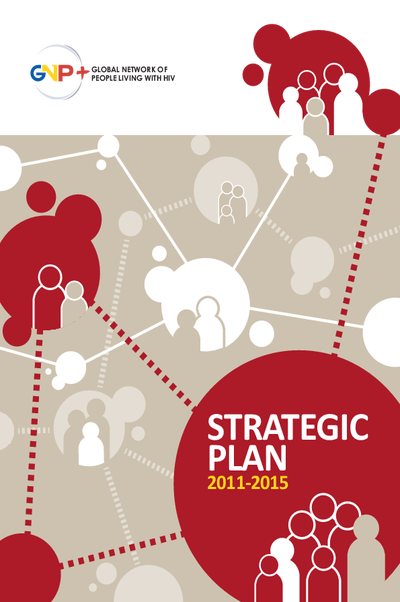
The Global Network of People Living with HIV (GNP+) has been at the forefront of the HIV response since 1986. GNP+ aims to continue to play an active role in guaranteeing the meaningful involvement and quality of life of people living with HIV (PLHIV) by transforming itself in order to meet the ever-growing needs and challenges of the HIV response. Informed by the vision to be a powerful, united worldwide social movement of PLHIV, with their leadership and voice at the core of the HIV pandemic, GNP+ recognises the need to evolve with the times to remain current and cutting-edge.
This comprehensive Strategic Review explored key questions in three areas, focusing on the role, work, and governance of GNP+. While the new Strategic Plan 2011–2105 builds on the achievements of the past, it is also grounded in the realities facing PLHIV today and incorporates recommendations from GNP+’s Strategic Review. From the Strategic Review, GNP+ has identified the continued needs of PLHIV, opportunities and challenges for GNP+, and key priority areas for moving forward.
The Strategic Plan is available in 5 languages.

In June-August 2010, the Global Network of People Living with HIV (GNP+) undertook a comprehensive Strategic Review – to inform a new Strategic Plan for 2011-15 and guide the organisation within the changing environment for HIV and global health. The Review was approved by the International Board of GNP+, managed by a Strategic Review Working Group and implemented by an independent consultant. It focused on three areas – the role, work and governance of GNP+ – and explored key questions (such as how GNP+ could make a more effective contribution to the global response to HIV). The Review looked backwards (reflecting on GNP+’s strengths and weaknesses in 2006-10) and forwards (identifying strategic issues and options for the future).
The full review is available in English only. A summary is available in 5 languages here.
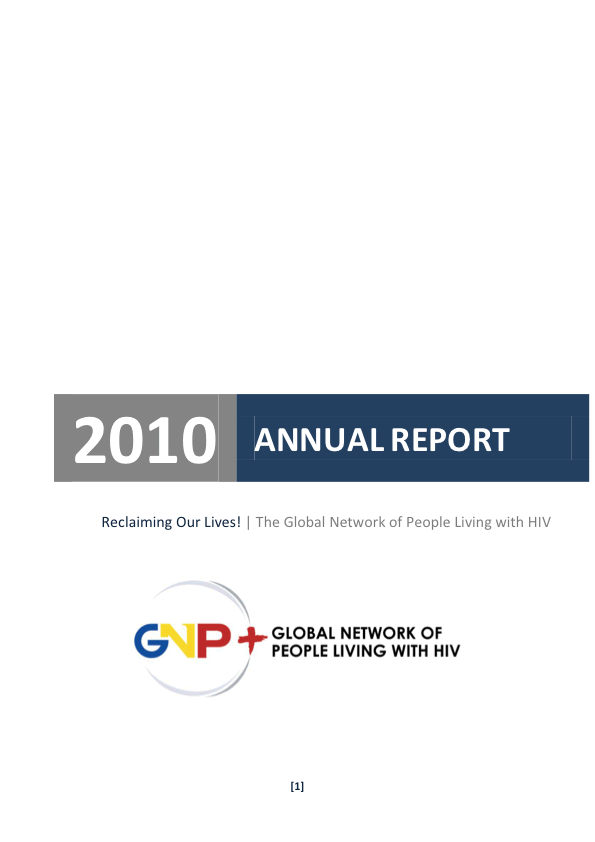
GNP+ is proud of its achievements and progress over the last few years. To ensure maximum transparency and accountability, GNP+ publishes its Annual Reports after they have been audited and approved by an external auditor.

GNP+ and the World AIDS Campaign supported the development of key advocacy priority messages and a briefing paper by and for young people living with HIV. These messages mean to inform the 2011 UNGASS process. These priorities were formulated based on results from an online survey with 168 young people living with HIV from 55 countries, as well as a literature review and interviews with several key informants.
Young people living with HIV want:
Available in English, French, Russian and Spanish

From December 2010 to February 2011, GNP+ and ICW Global held a series of consultations with people living with HIV to gather their perspectives and personal experiences on how programmes and services that seek to prevent the transmission of HIV from a mother to a child should be organised and run. The recommendations from people living with HIV were shared with the Interagency Task Team (IATT) for Prevention of HIV Infection in Pregnant Women, Mothers, and their Children to support them in strengthening a strategic framework they are developing for the primary prevention of HIV among women of reproductive age and the prevention of unintended pregnancies among women living with HIV (components 1 and 2 of PMTCT).
The consultations revealed that greater uptake of PMTCT services is facilitated by the following:
For further information about the consultations held, the findings and the recommendations, please see the following reports:

Y+ is an autonomous network developed from the young people living with HIV programme (Y+ Programme), a GNP+ programme for and led by young people living with HIV (YPLHIV).
The Global Network of People Living with HIV (GNP+) has established the Y+ Programme to address specific gaps in the HIV response and address the specific needs of young people living with HIV (aged 15-30).
Available in English, French, Russian and Spanish
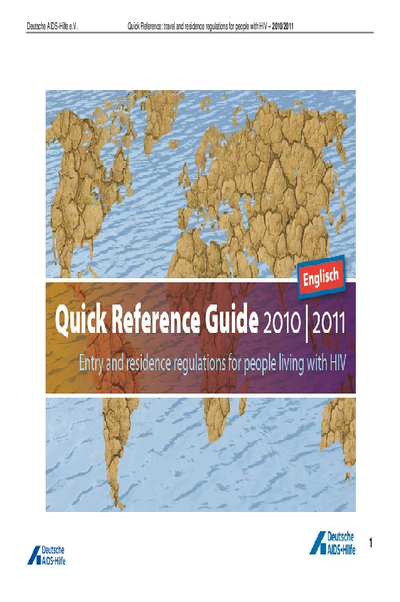
GNP+ has engaged with different partners on HIV related entry, stay and residence restrictions. GNP+ engaged with the Civil Society Travel Restrictions Task Team, the travel and mobility group through the UNAIDS PCB, as well as the Global Fund, PEPFAR and others. Since 2008, GNP+ has been contributing to the Quick Reference Guide set up by Deutsche AIDS Hilfe.
Available in English, French, German, Italian, Spanish and Slovak
The state of HIV vaccine research (Andrea von Lieven, International AIDS Vaccine Initiative—IAVI)
How are HIV-positive people involved in vaccines research? (Anuar Luna, RedLa+)
The state of ARV-based microbicides research (Thomas Mertenskoetter, International Partnership for Microbicides)
Treatment-as-prevention models: What are the opportunities and challenges around treatment as prevention? (Edwin Bernard)
The state of PrEP research and preparedness (Cindra Feuer, AVAC)
PrEP hype and hope: What should make HIV-positive people worry or rejoice? What shouldn’t? (Ebony Johnson, ICW)
The role of normative agencies: What are the lessons learned from the engagement of HIV-positive people? (Chris Mallouris, GNP+)
Community engagement and advocacy, particularly in Africa (Samu Dube, Global Campaign for Microbicides—GCM)
The experience of HIV-positive women in Africa engaged in NPT efforts (Lucy Wambura, NEPHAK)
The case for rectal microbicides: challenges and opportunities for advocacy (Marc-André LeBlanc, International Rectal Microbicide Advocates—IRMA)
The landscape of sexual health for HIV-positive gay men (Jack Arayawongchai, APN+)